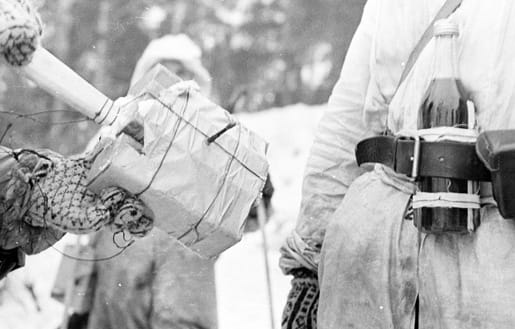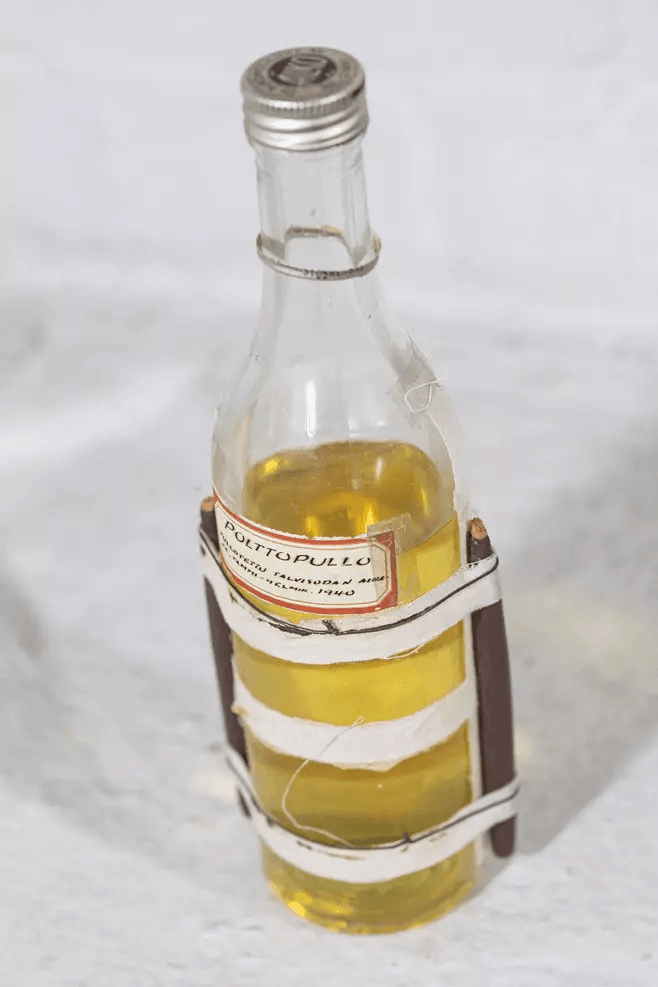In blogs and in the media, there is often a version according to which the “Molotov cocktail” was invented in the USSR, and was named after one of the long-term leaders of the state, Vyacheslav Molotov, who was responsible for the production of Molotov cocktails during the war. We decided to check if this is true.
A version of the Soviet origin of the name “Molotov cocktail” can be found in several books devoted to weapons of the Great Patriotic War. For example, about this it says in the book by Yuri Temirov “Encyclopedia of Misconceptions. War": "The current situation forced the State Defense Committee to resort to emergency measures. On July 7, 1941, he decides to use combustible bottles in the fight against tanks. The soldiers dubbed this weapon the “Molotov cocktail” (after the surname of Vyacheslav Molotov, Stalin’s then deputy in charge of the GKO).” There is a similar interpretation in book “Tank destroyers of the Second World War. Infantry anti-tank weapons - guns, grenades, grenade launchers." There, however, another version is presented in the notes. There is a story about the Soviet history of the name and in blogs.
In the Russian-language "Wikipedia» versions of the origin of the name are listed one after another as equivalent. In other languages - in particular, in English, French and Finnish this is not the case. The first version says that the Finnish military called the “cocktail” during the war with the USSR in 1939-1940. The second is that Molotov cocktails were made in the Soviet Union and were informally named after the deputy chairman of the State Defense Committee.
The Soviet version was confirmed by Molotov himself. In the 1980s, the former chairman of the Soviet government (Sovnarkom) talked with art critic Yuri Bychkov. Later this episode entered in Bychkov’s book “In the Front Line.” Molotov said the following: “I don’t remember the name of the inventor, but the fact is that from the first days of the war, Molotov cocktails began to be used against enemy tanks, causing great damage to the Germans. As a member of the State Defense Committee, I signed a decree on the mass production of such shells and monitored the progress of its implementation.” And then Molotov spoke directly about the name: “Enemy intelligence worked well, however. It was the Germans who nicknamed the Molotov cocktails “Molotov cocktails” - therefore, there is an obvious leak of information from the government.”
In the USSR, indeed, from the very beginning of the war, Molotov cocktails with COP were produced. On July 7, 1941, the State Defense Committee adopted a resolution “On anti-tank incendiary grenades (bottles)”, the containers were to be provided by the People’s Commissariat of the Food Industry. And Vyacheslav Molotov then actually held the post of deputy head of the State Defense Committee. But both the technique and the name appeared much earlier.
Finding the discoverer of Molotov cocktails is not easy. But they were widely used already during the Spanish Civil War of 1936-1939. And after that, during the Soviet-Finnish war, the bottles became famous.

In Finnish historiography, the discoverer of the “Molotov cocktail” think Captain Eeri Kuitinnen. Back in 1937, he adapted Spanish weapons to the weather conditions of Finland. Storm matches were taped to the bottle filled with a flammable mixture, capable of burning for a minute after ignition. In 1939, Captain Kuitinnen's innovation came in handy: on November 30, Soviet troops invaded Finland. Bottle production was put on stream, under this there was repurposed one of the largest vodka factories.

But why Molotov? In 1939, Vyacheslav Molotov was responsible for the foreign policy of the USSR and served as People's Commissar for Foreign Affairs, combining it with the post of Chairman of the Council of People's Commissars. It was he who signed the pact with Nazi Germany, he negotiated the secret protocols to the pact, he was the face of the USSR in the international arena and the personification of state propaganda. On December 4, a few days after the start of the war, Molotov stated League of Nations: “The Soviet Union is not at war with Finland and does not threaten the Finnish people with war.” Molotov assured that the USSR, on the contrary, was helping Finland and had concluded an agreement on mutual assistance and friendship (meaning the puppet government of Finland, installed by Moscow).
For Finland, it was Molotov who became a symbol of aggression. So, bombs RRAB-3, equipped with cluster munitions, the Finns began to call “Molotov bread baskets.”


Term appeared in February 1940 and referred to Molotov’s statement about the “humanitarian cargo” that the USSR allegedly dropped on Finnish cities. But such a quote from Molotov cannot be found; it is most likely an urban legend. Apparently, we are talking about the same letter to the League of Nations. In addition, one of the main songs of the resistance was “Njet Molotoff”, which spoke about the lies of the Soviet leader, and an unenviable fate was in store for him
In this context, the phrase “Molotov cocktail” appeared. The use of the term can be traced to Swedish press 1940: since January the name has been constantly appearing in newspapers. Thus, Molotov cocktails were named after Molotov long before the start of the Great Patriotic War and the appointment of Vyacheslav Molotov as deputy chairman of the State Defense Committee. And this name was not at all complimentary. As for the memories of Molotov himself, they can hardly be trusted. Perhaps the veteran of Soviet politics, who was by then over 90, had forgotten some details. Or he decided to support a myth that was convenient for himself.
Thus, there is no doubt that Molotov cocktails were produced in the USSR. But the name “Molotov cocktail”, like similar bottles themselves, appeared earlier, and it was invented by the Finns during the war of 1939-1940.
Cover photo: social networks
Not true
If you find a spelling or grammatical error, please let us know by highlighting the error text and clicking Ctrl+Enter.






